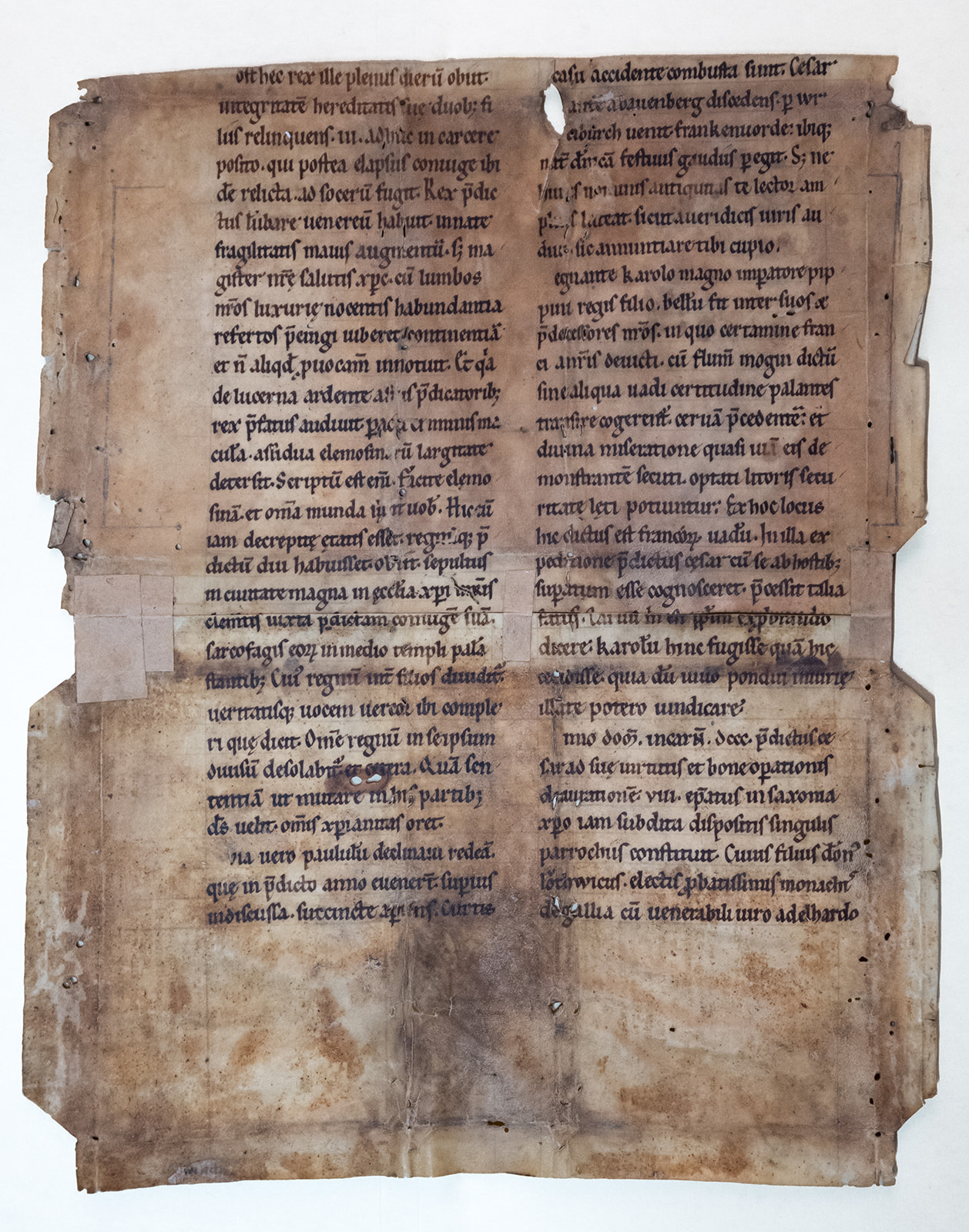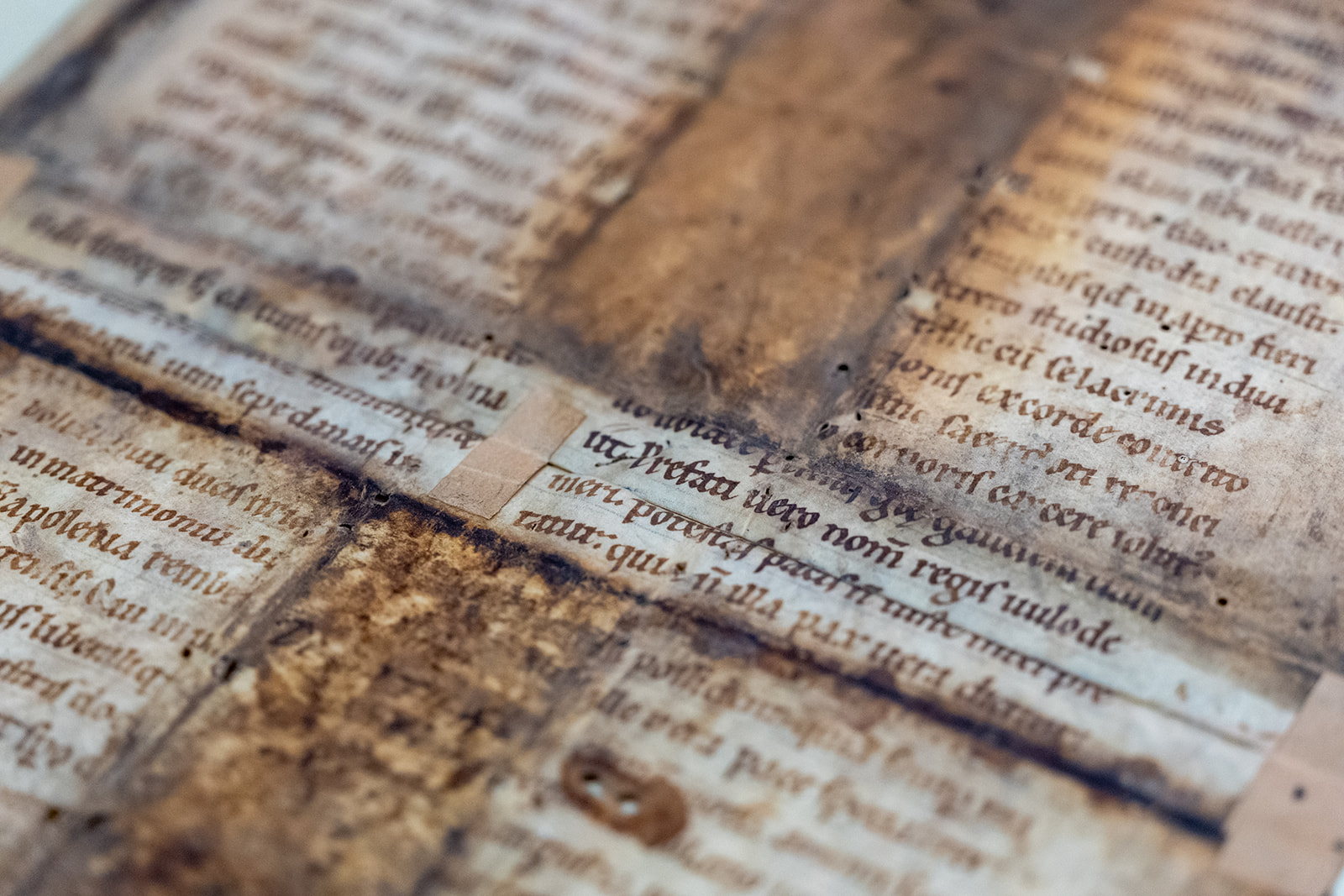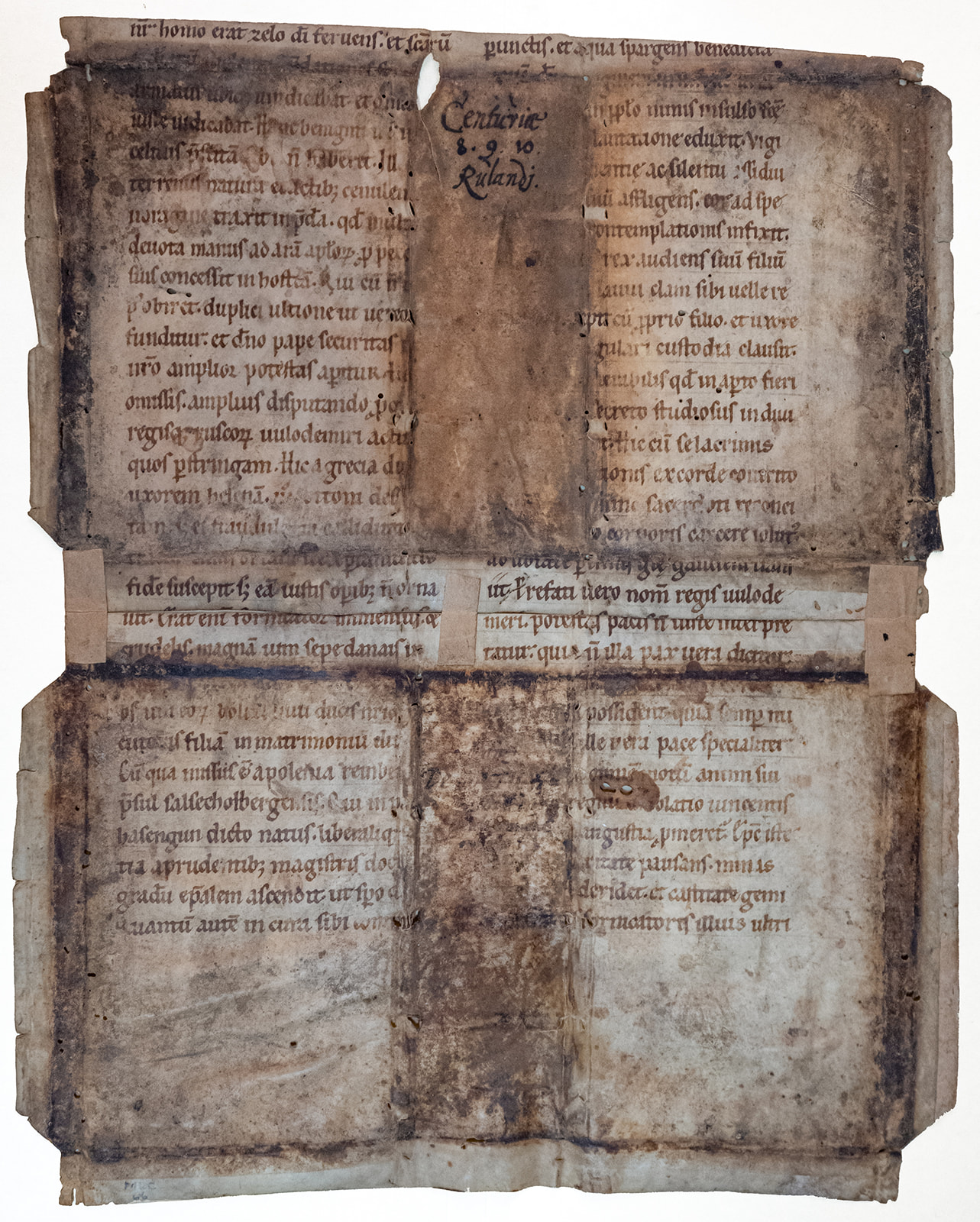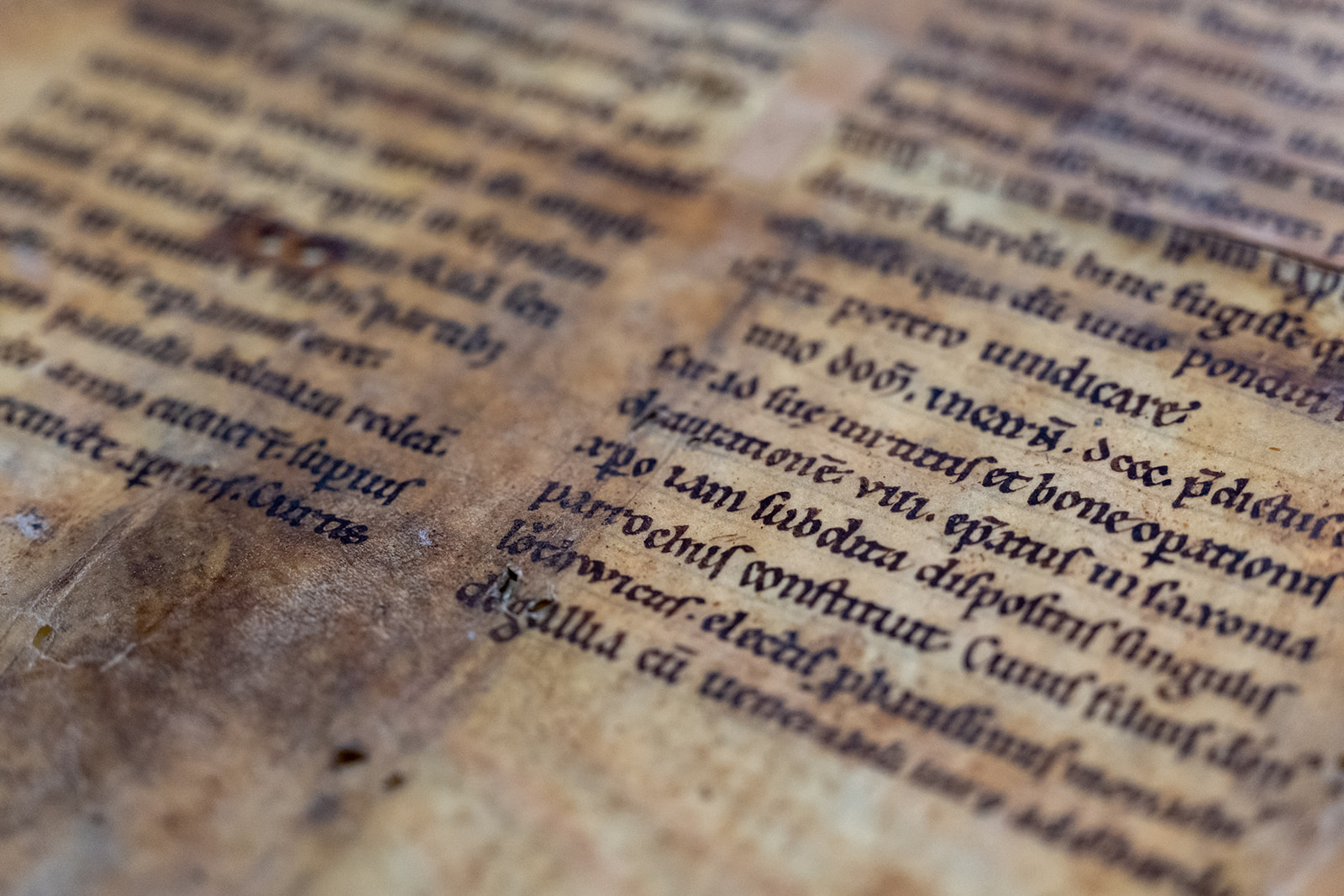Last December, the United Cathedral Foundations of Merseburg and Naumburg and the Collegiate Abbey of Zeitz were able to purchase a fragment from the chronicle of Bishop Thietmar of Merseburg (975/976-1018) at auction with the help of the Cultural Foundation of the Federal States, the State of Saxony-Anhalt and private donors.
"With the acquisition of this fragment, the Merseburg Cathedral Abbey Library has permanently secured a very important textual testimony to the European history of the Ottonian period for research," says Markus Cottin, Director of the Cathedral Abbey Library.
Markus Cottin drove forward the auction of the fragment for the Vereinigte Domstifter: "At the major exhibition on Thietmar von Merseburg in 2018, only one medieval textual testimony of the chronicle could not be shown: the fragment of a revision from the end of the 12th century from the possession of the philologist and manuscript collector Marvin L. Colker in Charlottesville/USA. Marvin L. Colker died at the age of 93 in March 2020, and in autumn 2022, the Vereinigte Domstifter were informed by Mr Thomas Taugnitz/Leuna that Colker's collection was to be auctioned off at Christie's in London. Thanks to the generous support of the Kulturstiftung der Länder, the state of Saxony-Anhalt and private donors, a financial framework for the auction of the fragment was created within a very short space of time. This made it possible to win the online auction on 12 December 2022 and secure the Thietmar fragment for the Merseburg Cathedral Abbey Library. The one-page fragment was purchased at auction for a total of 7560 British pounds (around 8600 euros)."
The fragmentary sections of the text record significant events: Thietmar reports on the King of the Russians, Vladimir I, who was baptised and thus founded the Russian Orthodox Church. Thietmar also retrospectively describes the naming of Frankfurt am Main, where a Frankish army under Pippin, the son of Charlemagne, found a ford thanks to a hind. Finally, the fragment contains an account of the beginnings of Corvey Monastery, which turned out to be an addition to this spiritual community.
With this auction, a medieval text of the important Thietmar Chronicle is finally available in Merseburg and thus in the state of Saxony-Anhalt.
Visitors will be able to see the fragment for the first time during the exhibition: "Otto the Great, Saint Laurentius and the foundation of the Diocese of Merseburg - tracing the imperial cathedral of Merseburg" from 18 May - 5 November 2023 in Merseburg Cathedral.




Background Information
The chronicle of Merseburg Bishop Thietmar is the most important narrative source on the history of the Ottonian period. Written between 1012 and 1018, the chronicle was initially intended as a history of the diocese of Merseburg in order to illustrate its former splendour. However, in view of Merseburg's position as a royal palace, the site of important court days and the foundation of Otto I's diocese, Thietmar's account grew into a history of the Ottonian rulers and the empire in its many European contexts. Thietmar wrote a total of eight books, which initially correspond to the reigns of the Ottonian kings and then refer to important events in Merseburg's history during the reign of Henry II. Thietmar always recorded the political history of Europe, based on sources such as Widukind of Corvey's Saxon History and the Quedlinburg Annals, as well as on what he had heard and experienced himself. He did this in order to illustrate Merseburg's role, for example in the founding of the archbishopric of Magdeburg.
The descriptions are particularly vivid for the times that Thietmar himself experienced, such as when he went into battle with Henry II or helped organise court days in Merseburg. He repeatedly referred to the old rights of the diocese and incorporated old donations to the church in order to assert his claims against the king during his episcopate. The result was a diligently written chronicle that provides an important insight into the political, economic and cultural developments of the Ottonian period. Without Thietmar of Merseburg's chronicle, we would know much less about the Ottonian era. The chronicle was already used and revised several times in the Middle Ages. The 16th century saw the beginning of the edition and critical examination of the source, which continues to this day. Time and again, the chronicle forms the basis for anniversaries, as around 50 places owe their first mention to it.
This newly acquired fragment from the Colker Collection contains text from Book VII, chapters 71-75 on the front and back of a trimmed leaf. Four lines of the double-column text have been lost in the upper margin due to trimming. There are also losses of text due to shaving, which was carried out for the application of a spine title. The fragment was cut up and served as a binding for an edition of the work "De ortu animae" by Martin Ruland. The book was first printed in 1591, so the binding was probably done in the 17th century.
The fragmentary text sections from chapter 7 of the chronicle record significant events, many of which Thietmar added later. He reports on the King of the Russians, Vladimir I, who was baptised and thus founded the Russian Orthodox Church. Thietmar complains harshly about his misdemeanours and reports on his bride Helena, a daughter of the Byzantine emperor. Vladimir I was buried in Kiev, in a coffin in the centre of a church.
Furthermore, Thietmar retrospectively describes the naming of Frankfurt am Main, where a Frankish army under Pippin, Charlemagne's son, found a ford thanks to a hind. Finally, the fragment contains an account of the beginnings of Corvey Monastery, which turned out to be an addition to this spiritual community.

